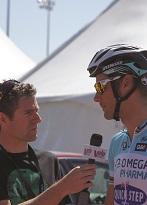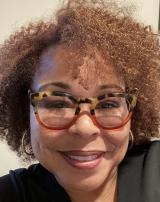

Publicity takes time and is often filled with rejection from reporters, writers, editors, and producers. Imagine not knowing a city and having to obtain a list of contacts from local television stations, radio stations, magazines, newspapers, and bloggers. Where would you even begin? The task of social media can be even more daunting.
So here’s the big question: Why go through that when there’s help within your grasp? Working with a CVB or sports commission is a great way to connect and collaborate with the media and come up with angles that are new and fresh.
When it comes to using the services available to them, many sports and events rights owners are in the dark. Not only are CVBs and sports commissions closely tied with local hotels, attractions, restaurants and businesses, we also know how to be a valuable resource when it comes to dealing with media of all types: local, regional, national and social media, too. Working with the media takes patience, know-how and a true understanding of an industry that revolves around relationships, deadlines and timing.
Here are a few ways you can effectively ‘up’ your media coverage by partnering with a PR resource and working with a CVB or sports commission:
Part of that understanding comes with knowing how to craft the perfect pitch. It’s easy to think that working with the media is simply a matter of creating and distributing a press release and sending it out to anybody and everybody who works for a media outlet. It’s also simple to say you have a story, but making sure it gets told or communicated in the way you want can be a bit tricky. The PR pros on CVB and sports commission staffs have personal relationships with the media that increases the chances of coverage.
Darragh Castillo, Destination Management Specialist for the Port Arthur, Texas, CVB, says, “I was in a unique position when I left the Port Arthur Newspaper to work for the PACVB. To boost media coverage for any event, I can call up the editor and ask to write and photograph a story myself to put on the front page. I’ve never been turned down. I did this for the Pleasure Island Bridge Half Marathon, which was on a Sunday. No reporters were working, and a news photographer was actually running. It helped the paper and my cause and that’s one of the benefits of working with a CVB in a small town!”
Castillo’s story is also an excellent example of the types of people many professionals hire for PR and media relations. They’ve been in the trenches of traditional media. Castillo knew exactly how to develop the idea, localize the story, and make things easier for the media by knowing the community and tailoring her message to increase chances of coverage.
 Looking for stories that are timely, unique, unexpected, the first of their kind, interesting, heart-warming, inspirational, and/or sensational (in a good way) is always top of mind with us. If, by chance, they fail to get that interview the first time, they won’t give up because they usually have a Plan B or even a Plan C. They have the time and the expertise to change the angle or rewrite the pitch and target different writers, producers and guest bookers.
Looking for stories that are timely, unique, unexpected, the first of their kind, interesting, heart-warming, inspirational, and/or sensational (in a good way) is always top of mind with us. If, by chance, they fail to get that interview the first time, they won’t give up because they usually have a Plan B or even a Plan C. They have the time and the expertise to change the angle or rewrite the pitch and target different writers, producers and guest bookers.
Social media is, as they say, a whole ‘nother animal in which there’s pressure to do it right, do it regularly and do it strategically. Lots of CVBs and sports commissions employ people, full-time or part-time, who live, breathe, sleep and dream about social media. They can think of posts and tweets and contests that will help connect your event with their already built-in audiences that often include media who are constantly looking for story ideas. They also know of a wealth of tools to publish and analyze their efforts on your behalf.
Once an angle has been determined, it’s time to come up with a strategy or plan of action to get the word out. That’s the best part about working with a sports commission or CVB’s PR and media staff. We regularly meet and talk with television, magazine and newspaper writers, editors and producers. Your CVB liaison will contact the media to share your ideas, write press releases, serve as a contact for media calls, provide detailed talking points, coordinate scheduling of interviews and appearances and so much more.
That’s exactly what I did for the Trampoline and Tumbling 2013 Elite Challenge in Frisco. I was introduced to Ron Jacobson, the USA Gymnastics director of program development. He, in turn, introduced me to the person who was the trampoline and tumbling program director. We set up a conference call with their VP of communications and their director of program and marketing communications. Ideas and strategies began to flow from there.

A few of the reasons a CVB or sports commission can be an important link to the media are as follows:
Because the staff members who do PR/media relations are skilled storytellers and content generators
We also have a track record with the media and the media representatives know we’re a safe bet
We’ve already nurtured long-term relationships that we can use time and time again
We’re not afraid to ask for what we want
We know what they’re looking for and can pitch accordingly
When they see our press releases, they always read them. And they’re more likely to publish them because we’ve been helpful to them in the past
CVBs and sports commissions also benefit in more ways than one when you rely on them to help your event get good publicity. The added value we get is being known for being a resource to our clients and to the media. Once you’ve built a relationship with the media, they’ll start contacting you when they’re looking for story ideas.
We also win bragging rights for our clients. This builds trust, strengthens and expands the relationship with them and adds to the likelihood they will bring their event back to our city and work with us again. It doesn’t matter how many years a CVB or sports commission has been in existence or how many employees they may have. What matters most are the critical services they provide and the many problems they can help solve.
So the next time you’re thinking about putting on a great event and would like some media coverage to boot, remember there’s still no substitute for building real relationships and working with local CVBs and sports commissions. Think of us as experts on all things local who can be an additional resource that’s also free of charge!

